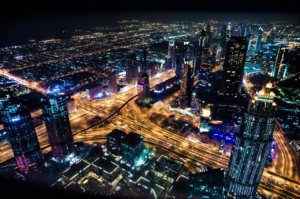“One of the chief prerequisites for the successful execution of a smart city project is neither technology nor effective management,” writes Pedro Ozores (@pedroozores). “It is trust.” [“Trust is ‘key’ to smart city success,” BN Americas, 10 October 2014] Ozores is correct. Unless all stakeholders (commercial, government, and private) “buy in” to smart city projects, they won’t succeed. And buy-in requires trust and mutual respect. I also agree with Julian Agyeman (@julianagyeman), a professor of urban and environmental policy and planning at Tufts University, and Duncan McLaren (@mclaren_erc), a freelance researcher and consultant, who state, “When mayors and developers focus on technology rather than people, smart quickly becomes stupid.” [“‘Smart Cities’ Should Mean ‘Sharing Cities’,” Time, 29 September 2014] Although many discussions about smart cities focus on the technology required to make systems smart, we should never forget that making cities smart means making them better places for people to live. Mike Steep (@MichaelJTSteep), Senior Vice President of global business operations at PARC, insists that smart cities of the future may indeed involve the Internet of Things (IoT), but the most important network will be the “Internet of You.” [“The Future Smart City Will Be Built Around You and the Internet of You,” Forbes, 22 September 2014] He explains:
“The current model of a Smart City as an extended Internet of Things is inadequate. It leaves out the most critical component — you, the digital citizen. You are not just a thing, but the reason the system exists. There can be no useful vision of a city, smart or otherwise, that doesn’t place you at its center.”
There are a lot of “smart” things involved in making a city smarter; they include: smart people, smart technology, and smart policies. Trust doesn’t require a “smart” label; but, it is nonetheless a smart thing to promote. Ozores reports that at an industry conference held in Brazil earlier this year, Javier Chávarri, CEO of the Reliable Governments (RGov) Microsoft Innovation Center, stated, “Everything starts with the trust citizens have in their governments. But the government must also trust in its population, which needs to engage in solving urban environment challenges.” Agyeman and McLaren add, “After researching leading cities around the world, we’ve concluded that truly smart cities will be those that deploy modern technology in building a new urban commons to support communal sharing.” Steep concludes, “To truly make the most of what a city can be, planners, companies, and urban dwellers need to understand three critical things.” The first thing they need to know, he insists, is that cities are layered. He explains:
“1. You don’t just live in a city; you cross through its layers every day. In the simplest view, cities have three layers: the underground level, the surface, and the airspace. In a Smart City there’s a corresponding parallel universe of data-collecting sensors integrated within each stratum. Take, for example, the underground. Like trees with a massive root system, cities are figuratively and literally supported by a vast subterranean physical complex — transportation, heat, sewers, fresh water, electricity, communications, and structural supports. Today these systems are being augmented with sensors, digital arrays, and hubs to monitor every aspect of their activity. If the earth shakes, whether from a train or a seismic event, the data will be accurately captured. The next layer is the surface. Think of streets, parks, plazas, and even the retail shops, restaurants, and other buildings or entrances normally accessible from street level. At this layer the parallel digital network includes cameras, location-based services, cellular networks, and sensors monitoring everything from traffic to the pace of pedestrians. The final layer is airspace. Skyscrapers, bridges, and towers hold aloft sensors that monitor wi-fi, weather, air quality, and perhaps even drone traffic.”
Steep indicates that it’s important that stakeholders understand these layers because they must be integrated so that the transition from one layer to the next is seamless. “The truly connected city begins to emerge in how data is managed across all three physical layers,” he writes. “Data analytics becomes the glue that, when managed well, dramatically improves your experience of life.” His second “must know” thing is that people need to be at the center of the smart city’s focus. He explains:
“2. You will be the active, mobile center of a vast network. We’re used to thinking of ourselves as part of a social network, but done right, Smart Cities promise to put each of us at the center of far-reaching civic and commercial networks, too. Points of connection will be everywhere — smartphones, clothing, cars, benches, buildings, parking meters, speed bumps, shop windows, and more. … Of course, smart doesn’t just mean opportunistic sales. The kind of porous and flexible connection required for usability argues for a whole new level of data security and privacy. A truly smart city must take into account social policy and how it translates into protection for its citizens.”
The final “must know” thing suggested by Steep is that people, not technology, will shape how the smart city develops. He writes:
“3. You will have the power to shape your experience of the city. … Cities have always shaped their inhabitants. The élan vital can manifest in an accent, the pace of service, or even how much time people spend outdoors. But this may be the first time in history that an individual citizen will have the power to push back on and shape her city in real time. We’re reaching a new level of engagement — a kind of symbiotechna.”
Agyeman’s and McLaren’s vision of a sharing city also captures the notion that urbanites must be able to shape how cities develop. “Unfortunately,” they write, “‘sharing’ is often too narrowly conceived as being primarily about economic transactions. … The problem is not just a failure of participation — as citizens remain excluded from decision-making — but of imagination, as politicians refuse to intervene in markets except at the behest of corporate capital.” They continue:
“Yet there is a better way of using modern technologies to create more just, inclusive and environmentally efficient economies and societies. Humans are natural sharers. Traditional, old-fashioned face-to-face sharing still happens in communities everywhere, but it has largely broken down in modern cities in the face of commercialization of the public realm, and of rapid, destabilizing economic and technological change. All this has dissolved trust, as we spend more time working and hide from our neighbors behind our security locks and alarm systems. Even so, new opportunities for collaboration and sharing are arising at the intersection of urban space and cyberspace.”
They go on to describe a number of ways that information technologies are being used to encourage sharing among residents and to help residents shape how smart cities progress. “Such communally inspired sharing,” they assert, “is transforming norms and cultures.” Underscoring Ozore’s point about trust, they write, “New opportunities for sharing create new opportunities to enhance trust and rebuild social capital. … City leaders need to support and emphasize communal models of sharing that build solidarity and spread trust.” They conclude:
“‘Sharing the whole city’ should become the guiding purpose of the future city. This offers a radically different vision compared with a global race to the bottom to attract footloose investment capital. It redefines what ‘smart cities’ of the future might really mean — harnessing smart technology to an agenda of sharing and solidarity, rather than the dumb approaches of competition, enclosure and division.”
Two of the most fundamental reasons that cities exist are to provide jobs for its citizens and to use scarce resources in the most efficient manner possible. Both of these objectives are people focused. I believe there are ways for governments, businesses, and private citizens to work together, foster trust, and shape a brighter future for our cities. Our future depends on it.




